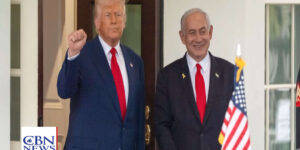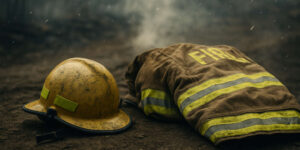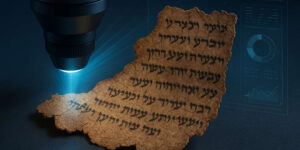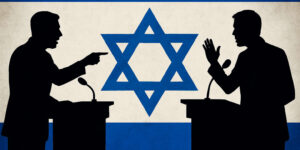Coptic Christian Massacre Costs Egypt Credibility
The Egyptian army’s killing of 27 people—including at least 23 Christians—who were protesting the burning of a church building has removed any respect most Egyptians had for the transitional military government, according to Christian human rights activists in the country.
The activists, along with members of Egyptian churches, said that the attack and the subsequent denial of any wrongdoing by the Supreme Council of the Armed Forces (SCAF) has taken away any credibility the army had among Christians, moderate Muslims and “secularists.”
Instead of assuming any responsibility for the killings, the military blamed unidentified “enemies of the nation.”
Wagih Jacoub, a Coptic human rights activist who was injured during the attack, was enraged at the assault and subsequent denial of responsibility.
“They are absolutely lying,” he said.
Jacoub said the evening of the protest resembled “hell brought down to Earth.” He said he was walking with the protestors when he was hit across his chest with pellets from what he described as a homemade shotgun.
“All of the sudden I was bleeding; my head was bleeding,” he said.
Jacoub recounted that he was also slashed across the top of his head with a knife; he then dropped to the ground, where he faded in and out of consciousness.
“People picked me up and took me to the hospital,” he said.
After being treated for his injuries, Jacoub wandered around the hospital in a state of horror and disbelief. Bodies from the protest were pouring in, and relatives hovered over the dead, weeping and screaming.
Jacoub noticed that one body looked very familiar. It was his friend, Mina Daniel. Before the attack, Jacoub and Daniel had been walking and joking together as other protestors came up to Daniel to say hello.
“We were laughing and talking in the protest, and then a few hours later I saw him lying in the morgue,” he said. “What did he do to deserve that?”
According to a medical report obtained and released online by his friends, Daniel was shot through the heart. Daniel, who had been injured during the January revolution, was an ardent political activist and a vigorous promoter of Christian-Muslim unity in Egypt. He was 25.
Vacillating Denials
In a press conference held three days after the Oct. 9 attack, generals with the SCAF vacillated between two positions: that they could not confirm whether soldiers were driving the vehicles that hurtled into the crowds, and stating that, “Soldiers driving armored vehicles were trying to avoid civilians who were throwing stones and Molotov cocktails at them.”
They have now stated that they are seeking a man in “a red shirt” the SCAF said is responsible for running over protestors.
The army flatly denied shooting at the protestors, instead asserting that counter-revolutionaries hidden among protestors were responsible for the deaths.
“There are enemies of the revolution. Don’t tell us this is a conspiracy theory. History has proven there are conspiracies,” Gen. Adel Emara said. “These enemies attempt to raise doubts about the leadership which are untrue and ignite sectarian tumult.”
Despite the military denials, at a press conference held on Oct. 14, forensic pathologist Dr. Magda Adly released a report stating that, of the 23 victims that doctors were able to examine post mortem, two had died of lacerations, 13 had been crushed by vehicles and two had been shot. Adly added that the doctors thought the caliber of the rounds found in the bodies of the victims were commonly used in the ammunition in Egyptian army sidearms. Doctors were unable to examine the four other victims.
In addition to the accusations against the military, there has been an uproar about the way the state media reported the incident. Although most of the killings happened just outside the Maspero media building, television news readers there not only told the Egyptian public that Coptic activists were attacking the army but implored Egyptians to go out to the streets and “defend the army.”
A lay pastor for a large Protestant church who requested anonymity said Christians and moderate Muslims now see that the army is a big part of sectarian violence in Egypt.
“The army has revealed itself,” he said.
The pastor said if the military was serious at all about addressing the events of what is now known as “Black Sunday,” they would court-martial the soldiers who ran the vehicles into the crowds of protestors. If the killings were accidental, then the soldiers in question should be tried for manslaughter and dereliction of duty, he said. If it was intentional, then they should be tried for murder.
Moreover, he said, if the soldiers were acting under orders, “then the officers should be court-martialed.”
Token Efforts
In the wake of the attack, the military-led transitional government announced it would rework the country’s discrimination law by making penalties for violating it more severe. It also promised to make headway on a law to change the way Christians will be allowed to build churches.
But all the Christians surveyed said increasing the penalties is useless if, as human rights activist Athanasious Williams said, “They don’t enforce the laws.”
The pastor agreed, calling the changes “ineffectual.”
“I don’t think it’s going to work,” he said. “I will not believe it unless I see it implemented fairly.”
Targeting Civil Disobedience
The Cairo attack started late in the afternoon of Oct. 9, when unidentified men began throwing rocks at the protestors, most of whom were Christians. As the protestors made their way from a largely Christian part of Cairo to the center of town, some of them began throwing the rocks back at their attackers, and in the melee that ensued, the men attacked the protestors with knives, metal poles and construction timbers, according to witnesses.
By the time protestors reached the Maspero Building, the headquarters for much of Egypt’s state-owned media, protestors began taking gunfire, and the military turned its riot-control vehicles on the demonstrators, running many of them over. Twenty-six protestors died in the attack. The next day, another victim died of his injuries, bringing the total to 27.
The oldest victim was 66; the youngest was 19.
Medical officials reported that one soldier died in the melee. But the military, while claiming several soldiers were killed during the attack, declined to say how many were killed, stating that it would affect the morale of the army. The dead soldiers were buried quietly, they said, to avoid further “sectarian” violence.
Much of the attack was captured on digital video and placed on the Internet by protestors and the news media, including graphic footage of riot-control vehicles ramming into crowds and crushing protestors. In one video segment, a military vehicle flipped over just after striking several Copts. As a crowd rushed to the vehicle, presumably to pull out the driver and kill him, a priest threw his body over the solider and protected him, taking the blows until the assault stopped. The priest later walked the soldier back to the safety of other military personnel.
Blame the Victims
The Oct. 9 protest came in response to a Sept. 30 attack in Upper Egypt where the Mar Gerges Church was burned down along with several Christian-owned homes and businesses in Al Marenab, a village in Aswan Province.
The church building, which was being renovated, was attacked by local Muslims who claimed the congregation had no right to alter it, despite legal documents parish priests had stating the contrary. The local Muslims claimed the structure was a hospitality house.
Before the attack, after negotiating with local Muslims, parishioners of the church had taken down crosses on the outside of the building. And when it was attacked, contractors were removing domes that locals held to be offensive.
The Mar Gerges burning was the third church building in Egypt in seven months to be burned down by a mob.
The protestors gathered in Cairo were upset, not only at the lack of government action in defending the church building from the mob, but specifically for claiming that the Christians in Al Marenab didn’t have the proper permits but built it anyway—in effect saying that they brought the attack on themselves. No one has been arrested in connection with the burning.




























































